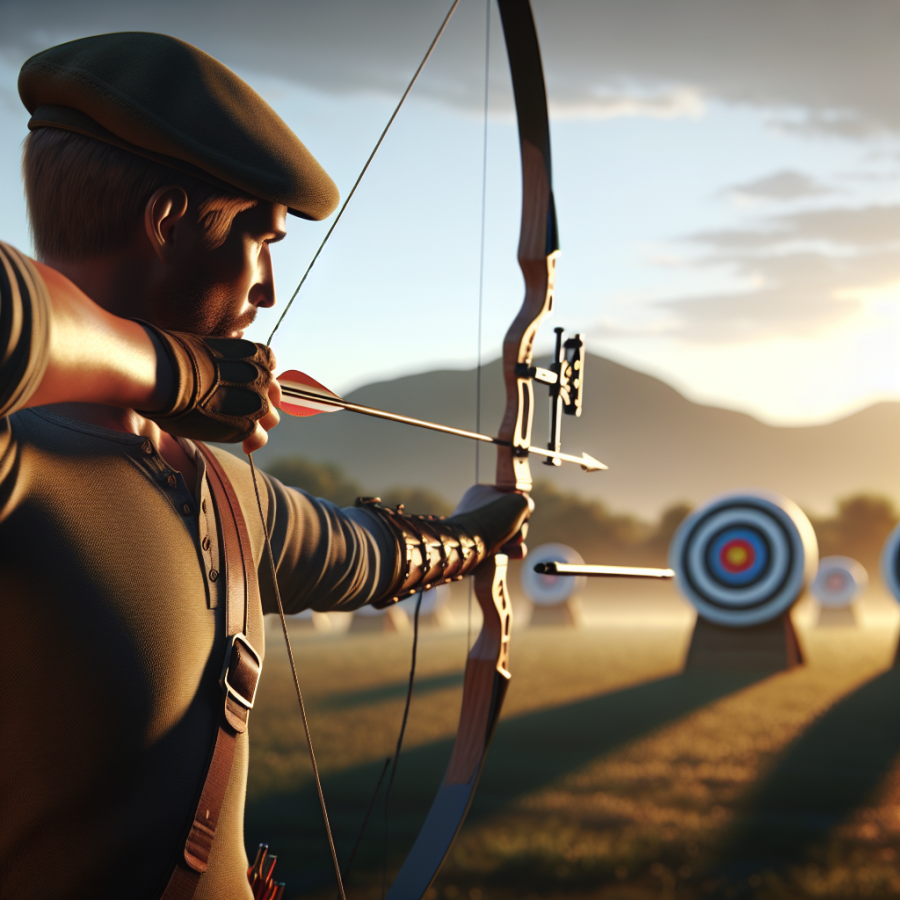Understanding the Fundamentals: The Basics of Archery Skills and Techniques
Archery is both an ancient art and a modern sports activity. The fundamental skills and techniques exist at the core of every arrow that hits its target. This blog will help you dissect these basics, providing valuable insight into the world of archery.
One of the first things to learn in archery is stance. The way you present yourself before drawing your bow will affect precision and consistency. The ideal archery stance involves standing side-on to your target with your feet shoulder-width apart. Your non-dominant foot (the foot opposite your shooting hand) should point directly at the target while your other foot remains parallel. Imagine a straight line going actually through your feet up to the target to ensure you’re positioned correctly.
Grip, much like stance, is a critical fundamental in archery. Holding your bow too tightly can cause the weapon to torque upon release, which can adversely affect your shot’s accuracy. The perfect grip involves cradling the bow in the fleshy part of your palm while keeping your fingers relaxed. A good grip allows you to maintain complete control and stability, thus improving accuracy.
The draw is the step where you pull the bowstring back in preparation to shoot the arrow. Draw length is essential, as it should be consistent every time for repeatable accuracy. The anchor point is the place where the drawing hand settles or rests consistently while aiming. Most archers select a spot on their face where the string and hand will line up each time they draw back the string, ensuring a consistent draw length and a steady, accurate arrow release.
Aiming is about aligning the arrow with the target. One common technique used by archers is "instinctive aiming," which dismisses the use of sights and relies purely on the archer's subconscious mind for aim. Others use a sight, a device attached to your bow to help aim the arrow. Whether you lean on modern technology or traditional skill, concentration on the target is of utmost importance to maintain consistent accuracy.
Follow-through is the last part of the archery shot cycle. Proper follow-through ensures that all the energy you’ve put into pulling back the string is transferred to the arrow when it’s released. Your bow arm should stay outstretched and motionless until after the arrow hits the target, while the drawing hand continues its backward motion after the release. Good follow-through ultimately ensures a smoother shot.
Understanding the basics is the first step in your journey with archery.
Top Tricks for Perfecting Your Aim: Advanced Archery Techniques for Mastery
Improving your accuracy in archery requires consistent practice and a deep understanding of the various techniques that can perfect your aim. Whether you’re a beginner or a seasoned archer, there are a few tricks that can help uplift your game.
One of the most effective techniques for enhancing your archery skills is the Fine-Tuning Technique. This process involves carefully adjusting your equipment for optimum performance. It begins by setting up the bow for your draw length, draw weight, and adjusting the peep sight. Once you've set up the bow, you then have to tune your arrows for optimum flight. This could involve adjusting the spine of the arrow, its weight, and possibly even its length and fletching. This process is meticulous and requires patience, but the outcome is undeniably beneficial.
Next, it’s worthwhile to master The Stance and The Grip. While this might seem rudimentary, the proper stance and grip are crucial in achieving a perfect aim. The ideal stance is square or slightly open, with your feet shoulder-width apart perpendicular to the target. An improper stance can lead to inconsistency in your shots. The grip should be relaxed with the bow sitting on the meaty part of your thumb and your fingers lightly curved around the grip. Avoid squeezing the grip as this can cause your shots to move to the left or the right.
Following this, The Anchor Point Technique can also improve your aiming prowess significantly. It helps in providing a reference point that ensures consistency when drawing your bow. The anchor point could be a spot where your hand or the string touches your face when you're at full draw. This technique improves your shot consistency, resulting in more accurate shots.
In addition, learning to control your breathing through the Breath Control Technique can greatly influence your shot accuracy. During archery, your rib cage and shoulders can move with each breath, slightly altering your draw length and aim. By exhaling slowly as you draw and holding your breath as you release, you can minimize these alterations, enhancing your accuracy.
Periodically checking your form using the Form Analysis Technique is a must. Having a coach or using video analysis can help spot the mistakes that may have crept into your form. Having a consistent form is crucial in bow shooting because it aids in consistency, which is highly instrumental for accuracy.
Implementing The Follow Through Technique, where you maintain your position until the arrow hits the target, can often be overlooked but is immensely helpful.




